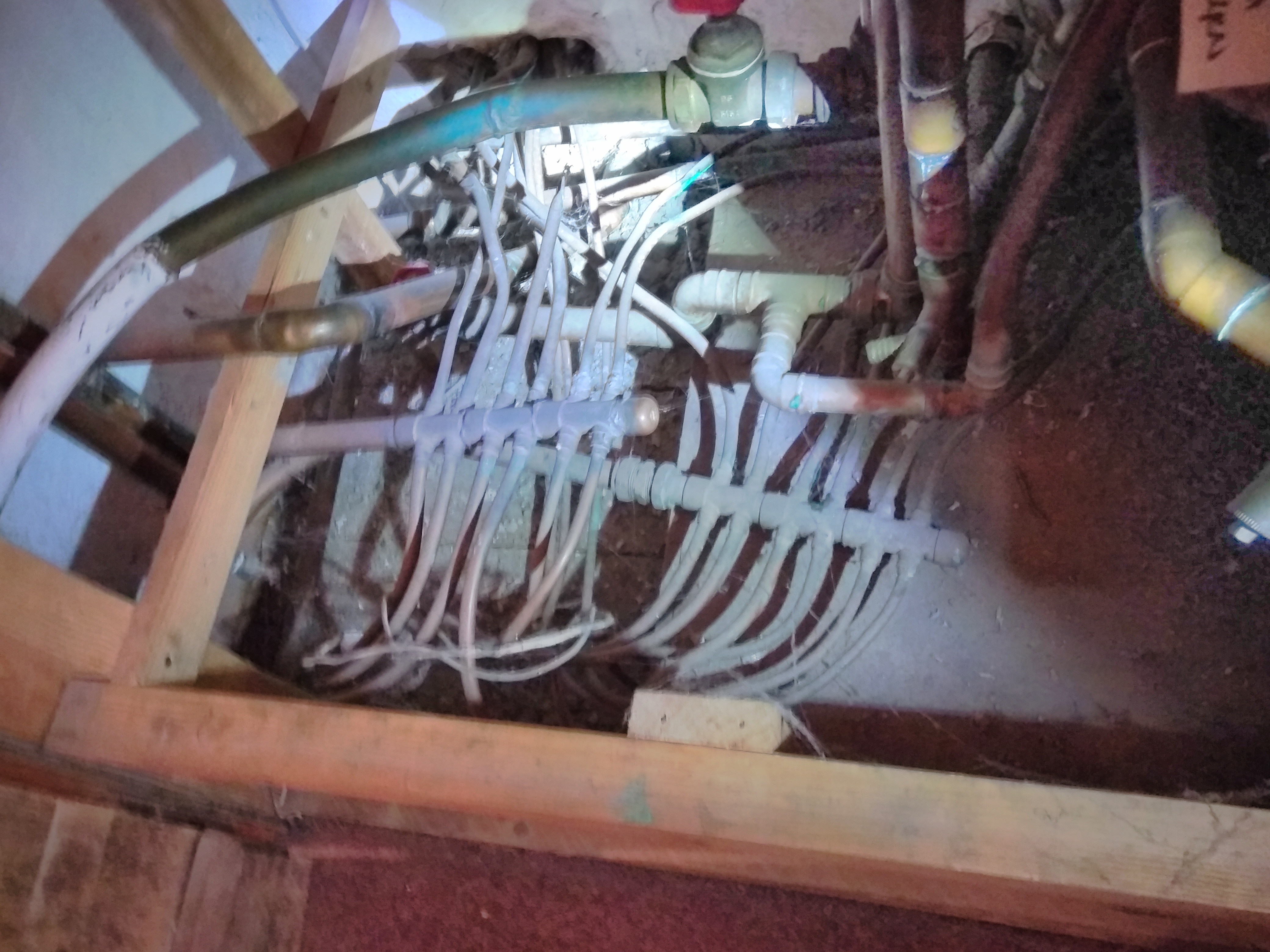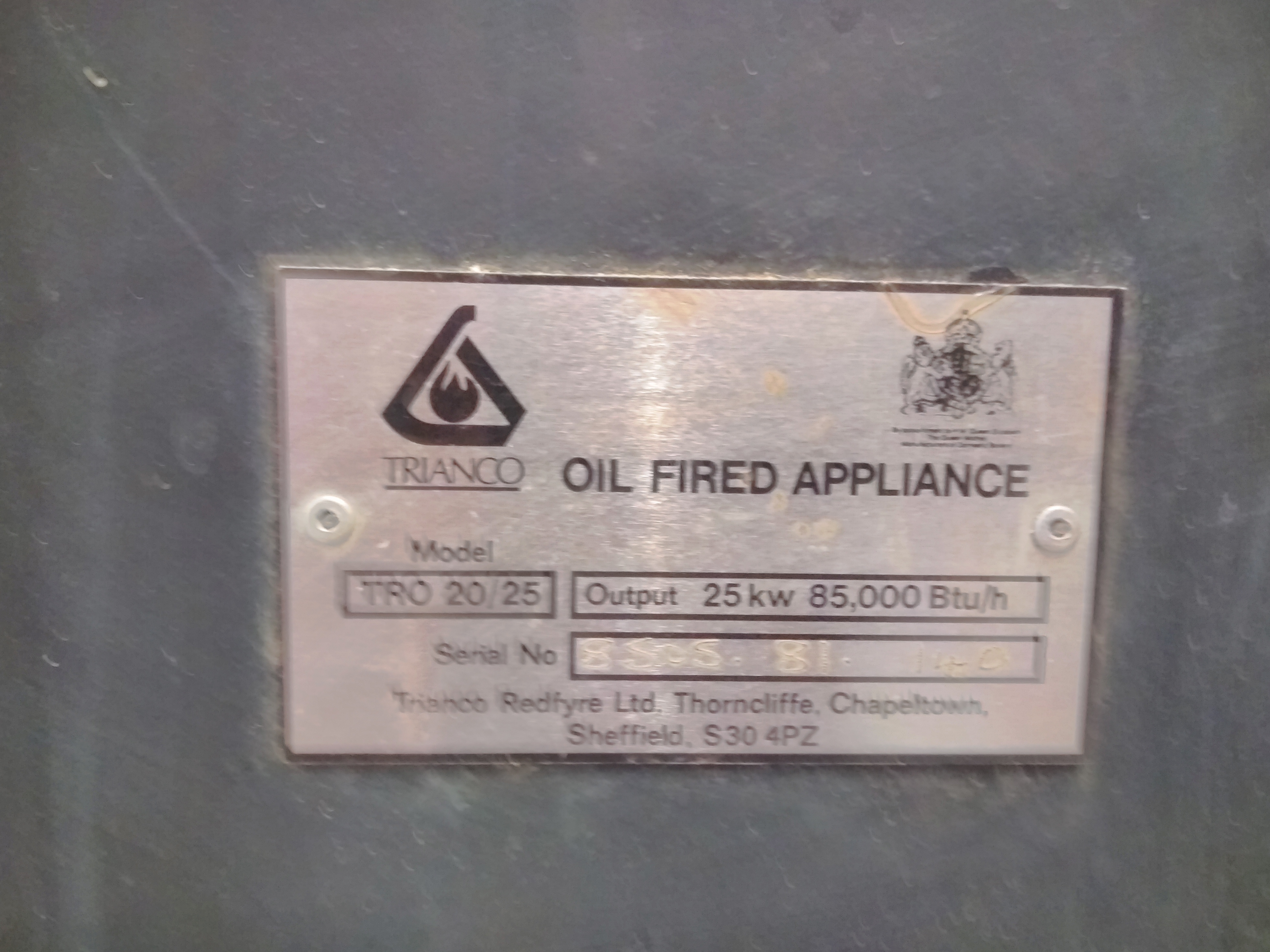- Joined
- 29 Mar 2005
- Messages
- 178
- Reaction score
- 0
- Country

Hi,
Firstly, please forgive the long post. I was never any good at precis at school.
I am doing some renovation work in our house, part of which involves an upgrade to the central heating control. The current setup is an oil-fired boiler (no mains gas here) with the radiator feed being only what I can think to describe as a pair of facehuggers in the airing cupboard before it goes out via a random mix of 8mm and 10mm microbore to the rads:

The boiler is pretty old and right now we can't afford to replace it:

Now ... although the heating system works, it's ridiculously expensive to run, in part because there's only one thermostat for the entire house, and being as it's quite a spread out and extended 1850s house with 2ft stone walls and a great variation in temperature between one room and the next there's no obvious place to put a system-centric thermostat. The result is that either my wife ends up smuggling peanuts or the boiler runs far more than it needs to and burns up loads of oil.
My plan:
All of this of course would also benefit when we do replace the boiler with something not signed off by a triceratops.
So, I have a few questions/thoughts
Sorry I've gone on a bit, but there's a lot to cover, and I've been on the home brew. I'm not sure which is worse.
Any comments or info most gratefully received.
Cheers,
Kingsley,
Firstly, please forgive the long post. I was never any good at precis at school.
I am doing some renovation work in our house, part of which involves an upgrade to the central heating control. The current setup is an oil-fired boiler (no mains gas here) with the radiator feed being only what I can think to describe as a pair of facehuggers in the airing cupboard before it goes out via a random mix of 8mm and 10mm microbore to the rads:

The boiler is pretty old and right now we can't afford to replace it:

Now ... although the heating system works, it's ridiculously expensive to run, in part because there's only one thermostat for the entire house, and being as it's quite a spread out and extended 1850s house with 2ft stone walls and a great variation in temperature between one room and the next there's no obvious place to put a system-centric thermostat. The result is that either my wife ends up smuggling peanuts or the boiler runs far more than it needs to and burns up loads of oil.
My plan:
- thermostat in each room
- replace facehuggers with up to date manifold
- each manifold outlet has its own valve controlled by that room's thermostat
- any thermostat demanding heat fires up the boiler
- no hot/cold mixing, as this is for radiators not underfloor heating
- a bypass valve a bit like this one between the manifolds: https://www.screwfix.com/p/straight...odFawJFA#product_additional_details_container to maintain flow through the boiler in case only one or two rads demand heat and there isn't enough flow to keep the boiler happy
- I have looked at various manifolds, and these seem as reasonable as any: http://emmeti.co.uk/products/heating-manifolds/t2-topway-fm/
All of this of course would also benefit when we do replace the boiler with something not signed off by a triceratops.
So, I have a few questions/thoughts
- how much flow or perhaps pressure differential should I allow for with the bypass valve?
- is the bypass valve I have highlighted going to flow enough, and if so what pressure should I adjust it to? If not, I could install a couple in parallel unless there's a better one. The Honeywell one seems quite expensive.
- the Emmeti manifold's electrothermic actuators allegedly take 2.5 minutes to respond. For a radiator system that seems to be to be adding a lot of lag to the response, so I wondered about using these instead http://emmeti.co.uk/wp-content/uploads/2013/06/TPG-Motorized-ball-Valve-Modulo-Compact-Oct-2012.pdf though they still seem to take 60s to actuate
- I heard that using ball valves in a CH system was a bad idea because of rust causing wear on the nylon seals, so wondered about adding one of these: https://www.screwfix.com/p/adey-cp1-03-00022-01-2-magnetic-filtration-22mm/49961
Sorry I've gone on a bit, but there's a lot to cover, and I've been on the home brew. I'm not sure which is worse.
Any comments or info most gratefully received.
Cheers,
Kingsley,
